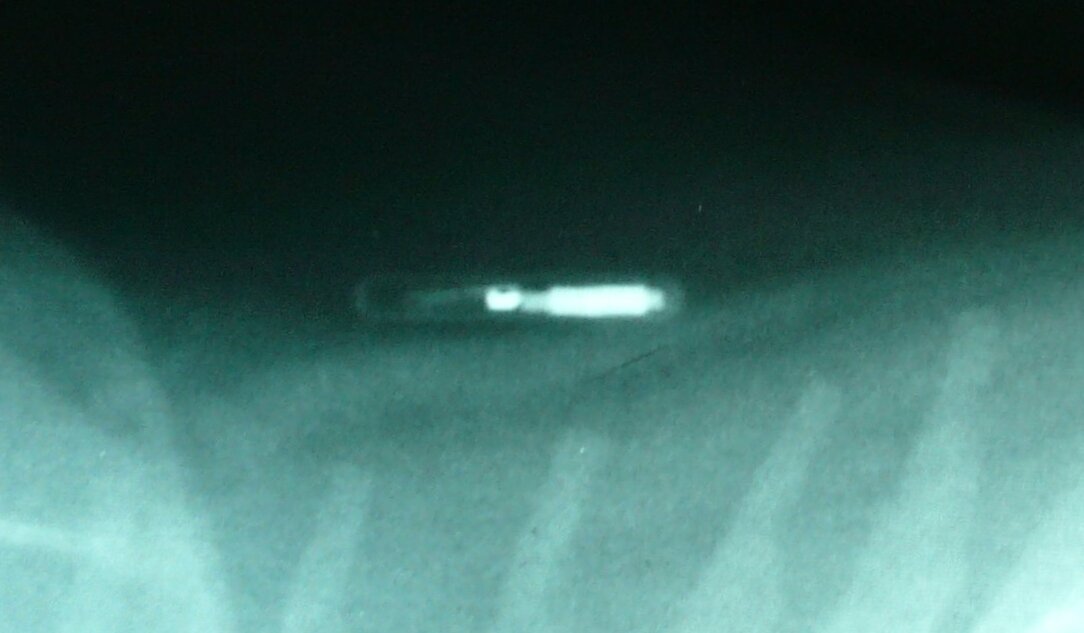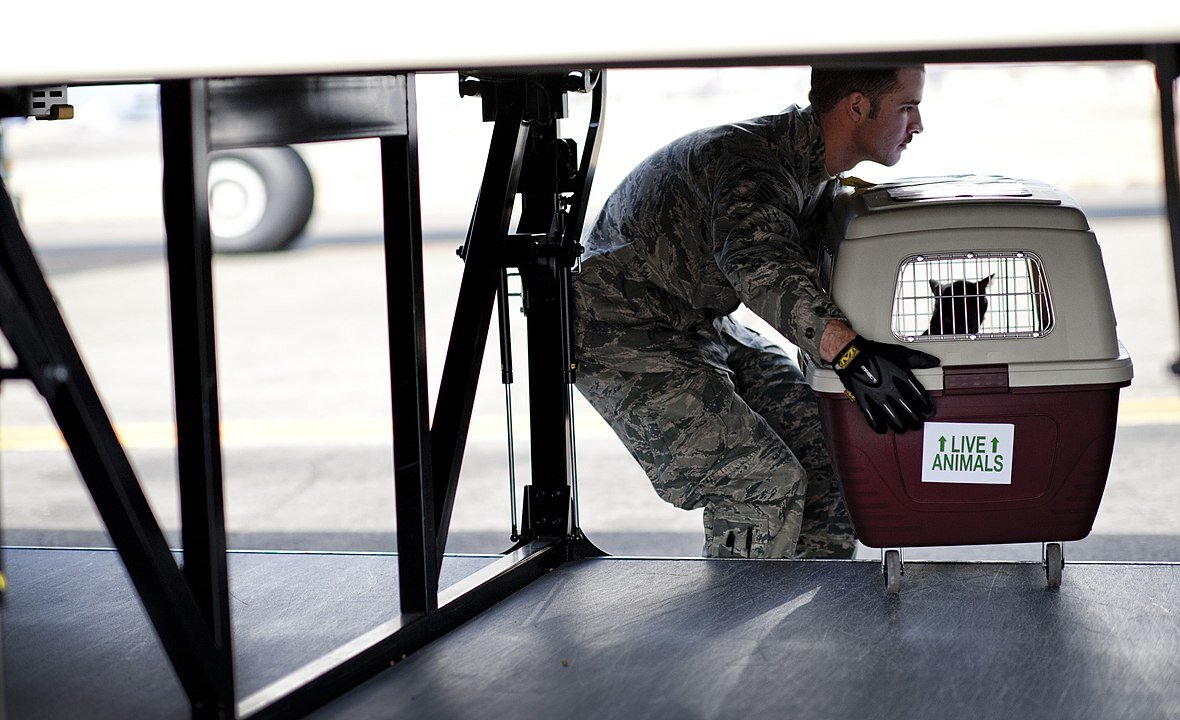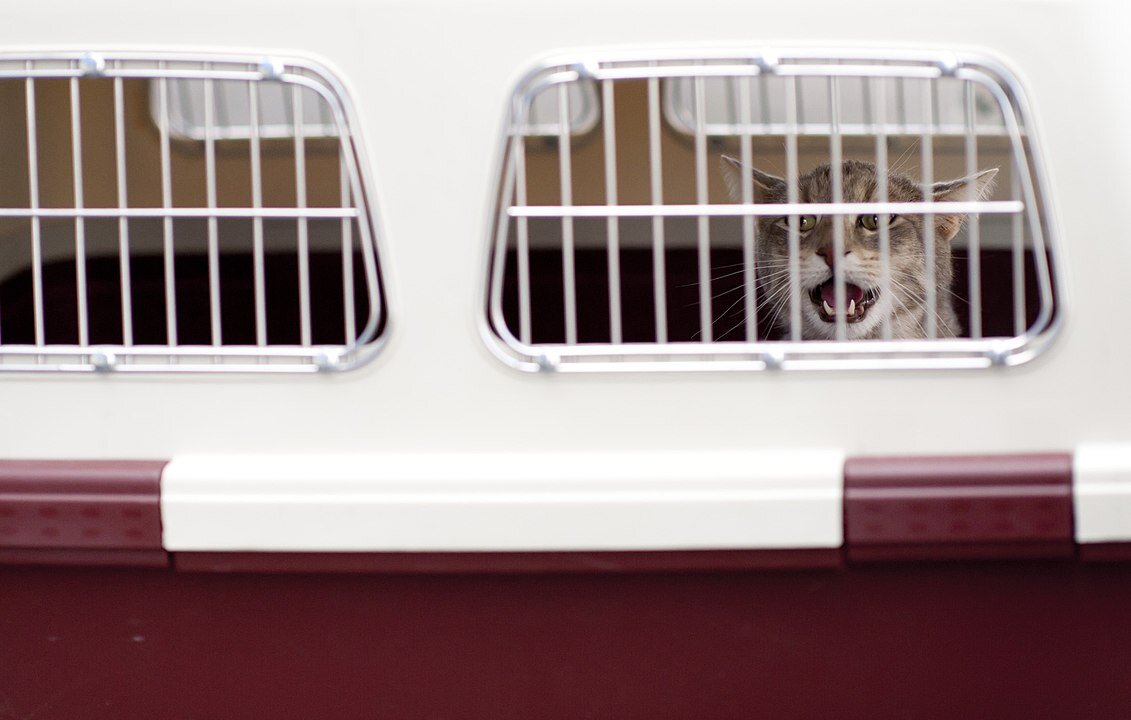A common question we get asked by people considering adoption is how hard it is to export a pet to a new country. After all, for many, Cambodia serves as a temporary base, and most people relocate after a few years or even months. In this blog post, we discuss how to bring your pet to a new country, and we throw in a few tips to smooth out the process.
Dreaming of walking your Cambodian cat on a cobbled street in Europe? PEXELS
This is the first entry in a series consisting of three articles. In this article, we tackle pet travel to the European Union and the United Kingdom. In the next posts, we discuss sending your pet to North America and Australia.
Note that we will be focusing on cats only. The topic of pet travel is already complex enough, so by discussing just cats (we are ‘Ministry of Cat’ after all) we can somewhat reduce the length of these posts. If you are looking for information on dogs and other pets, both VSL and Movetocambodia.com have written great posts on the topic.
Taking your animal companion to a different country may seem like an overwhelming endeavor. The paperwork required looks daunting, and, on top of that, there is a significant cost factor involved. But don’t despair—it is actually not as hard as it sounds. Before we get started, let’s discuss the current situation and how the Covid-19 pandemic is affecting pet travel.
Taking Your Pet Abroad Amid Covid-19
Coronavirus is, generally speaking, not good news for those eyeing to take their pets to Europe. Dr. Lauren Marsden from veterinary clinic VSL says in some cases the pandemic has made it easier to travel with pets, but, mostly, it has made it worse.
She notes that several airlines have stopped or greatly reduced the number of flights to and from Phnom Penh due to a drop in travel demand. In many cases, airlines have also switched to smaller aircraft that don’t have a segment in the baggage hold equipped with temperature and pressure control for pet travel.
Staff at an airport helping to move a cat to a new home. WIKIMEDIA COMMONS
This has been both good and bad for exporting pets. On the plus side, a lot more dogs and cats are being allowed to travel in the cabin in the company of their owners. On the other hand, bigger animals (those that don’t meet the size requirements to travel in the cabin) are now being denied travel altogether.
Finally, Dr. Marsden notes, “Even if the animals comply with requirements, they may be refused the flight because of their owner’s nationality; some countries will refuse transit to certain nationalities, regardless of their country of residence.”
Basics & General Requirements
Getting your cat to Europe can be a bit more difficult than other regions of the world due to the European Union’s strict requirements. Covid-19 or not, if you are a pet-owner and relocation to Europe is on the cards, we have two tips for you. Stay up-to-date with vaccinations, and start the process of exporting your cats at least six months in advance of your departure date. Let me explain in more detail.
Keeping up with vaccinations, deworming and defleaing is something that all responsible pet-owners must take to heart. It is also a requirement to be able to send your cat to another country. Having your pet passport or health booklet completely up-to-date, with all vaccine deadlines met, is paramount.
Our second tip is to start the process as soon as possible. In fact, there is no reason not to start at this very moment, even if you don't have any relocation plans in mind. You need in the very least six months to get everything ready, but starting earlier than that won’t hurt. Some requirements, like the rabies titration test, can be done at any point and will be valid indefinitely. In any case, preparing now and getting acquainted with the process well in advance can only improve your chances of successfully bringing your pet to your new base while minimizing the stress factor.
The Process at a Glance
In its most simplified form, the process of taking your cat to Europe and the UK consists of the following steps:
Microchipping
Keeping up with rabies vaccinations
Taking a rabies antibody titration test
Securing an export permit
Completing an Annex IV or Annex 1 form
Microchipping
One of the first things you need to do is to get your cat microchipped. The microchip must have 15 digits (if not, you must bring your own microchip reader to the airport). Any vet in town can get your pet microchipped during a standard 15-minute appointment. It would cost you anywhere from $25 to $80, depending on the vet. Also, keep in mind that the microchip must be implanted before the last rabies shot.
A radiograph of a cat with identifying microchip above the spine. WIKIPEDIA
This step can be done at any point, so why not today? Getting your cat microchipped will help you locate and identify your pet in case she gets lost, so it is always good to get this out of the way as soon as possible.
Rabies Vaccinations
Vaccinating your pet against rabies and keeping up with boosters is a requirement if you want your pet to enter Europe from Cambodia. This is because the Kingdom is classified as a ‘high rabies country’, so the virus is very widespread.
Even if you are not planning on moving your cat to a new country, vaccinating her against this serious disease is of paramount importance. Both indoor and outdoor cats can fall prey to this fatal virus. You can vaccinate kittens as young as 12 weeks old. The initial vaccine is followed by boosters annually or every three years (depending on the type of vaccine used). Don’t forget that at least one rabies shot must be given after the microchip is implanted.
Rabies Antibody Titration Test
The rabies antibody titration test—also known as the Rabies Neutralising Antibody Tests (RNAT) or titer test—is conducted to ensure that your pet has developed enough antibodies in response to the rabies vaccine. One thing to keep in mind is that the test must be administered at least 30 days after the last rabies shot. Once your pet passes the test, you will have to wait three months before she is allowed to travel.
This step in the process can take a toll on your pocket. The test must be performed by a laboratory approved by the EU. In Phnom Penh, VSL can take care of the whole thing for about $200 (plus $15 for an appointment to draw a blood sample). On top of that, with Covid impacting the operations of regular mail service, VSL is being forced to use couriers, adding an extra $50 to the process. Despite this, VSL is still your best option. You won’t have to deal with the lab or with postal services. Using VSL, you will have your results back in about six weeks.
To expedite the process and potentially save some money, you can take some of the process into your own hands. You can go to your local vet to get a blood sample and then mail it to your lab of choice in Europe. The lab will mail you the results back when ready. This can get quite complicated and, of course, risky, as mailing in and out of the Kingdom is far from a smooth process.
The real good news is that the titer test is good for the rest of your pet’s life, as long as you keep up with the annual rabies shots. Beware though: you must give the vaccine the following year on the exact same day (or even a few days earlier) than the last vaccine before the titer test. Subsequent shots must all be done strictly on time. If at any time you fail to do this, the test will be null, and you will have to start the process all over again. So, once you get this test done, make sure to make a note in your calendar for the next rabies test!
Export Permit
The next document in the list is the export permit, which is issued by the Cambodian Ministry of Agriculture. To apply, you must know the exact itinerary and date of travel. You can secure the permit on the same day if you go directly to the Department of Animal Health and Husbandry in Phnom Penh. It will cost you about $20. Alternatively, you can do it through your local vet, which will take 7 to 10 business days and cost about $60.
A man picks up an animal carrier with a cat from a bus. WIKIMEDIA COMMONS
VSL recommends that you apply two weeks before departure and that you simultaneously request the Annex IV (or Annex 1) form, which is the next (and last) document on the list.
Annex IV
The next document you’ll need is the Third Country Official Vet Certificate & Declaration for the Non-Commercial Movement of Animals (doesn’t it just roll off the tongue?), also known as Annex IV. This document is a prerequisite to enter the EU and the UK. The key thing to know is that approximately two weeks before you are due for departure you must bring your animal to the vet for one final health check. After that appointment, the certificate will be completed by the veterinarian and sent to the Ministry of Agriculture for endorsement. Because the form needs to be OK’ed by the ministry, it often takes about 10 days to be ready. VSL charges $60 for this service.
The United Kingdom
Everything we just explained applies as well to the UK. The main difference is that the UK does not allow your furry friend to travel in-cabin. Because the animal will travel as cargo, you will have to hire an agent to pick her up once the plane lands in British territory and bring her through customs. Needless to say, this balloons the cost of moving your pet significantly. You can bypass this by flying to Paris (or other destination in mainland Europe) and then getting a pet limo company to drive you to the UK.
Additionally, the process of sending your pet to the UK may be impacted by Brexit. How exactly is still to be seen. For the time being, however, it is business as usual.
Airlines
When airlines enter the equation, the situation quickly becomes more confusing. Pets can travel one of three ways in airplanes: in the cabin, as excess baggage (in the same flight than the owner), or as manifest cargo (in a separate fight).
Some airlines allow pets, but only as manifest cargo. Others will allow in-cabin travel, but only if the crate (with your pet inside) is under a certain weight. While some airlines will have more specific requirements, all will at the very least require that the crate is large enough for your pet to stand up and be able to turn around comfortably.
You can expect to pay around $100 for pets that travel in-cabin and up to $250 for manifest cargo, according to Movetocambodia.com. Some airlines may charge by weight.
One company we heard good things about is Korean Air. This carrier has a flight from Phnom Penh to Paris via Seoul. The airline normally allows cats in-cabin if they are older than 8 weeks and if they weigh less than 7kg (15lbs), including crate. This will cost you $200. For pets traveling as excess baggage, the airline charges $300 per cage that is less than 32kg (70lbs) and $600 for cages that are 33kg-45kg (71lbs-100lbs).
However, with Korean Air, pets cannot fly in the cabin to destinations that require they arrive in the cargo hold, such as the UK. On that note, Korean Air has a SkyPets Program, a frequent flyer program that rewards pets that fly frequently.
Eva Airlines has also received good reviews from pet owners. From Phnom Penh, this airline can bring you to Amsterdam, London, Milan, Paris, and Vienna. A person who recently used Eva to move her cat to Canada praised their customer service. However, she pointed out she had to book the pet as extra baggage under the plane, as this was the only option the company allows.
People recommend Eva Airlines for pet travel. WIKIPEDIA
Lufthansa is another airline with flights connecting the Kingdom and Europe (codeshare with Bangkok Airways). Pets under 8kg (including crate) are allowed as additional carry-on baggage in the passenger cabin.
These are some airlines that people have used to successfully move their pets to Europe:
Korean Air
Eva Airlines
Dragon Air
Cathay Pacific
Vietnam Airlines
Bangkok Airways
Thai
Asiana
Malaysia Airlines
Lufthansa
KLM
Cat Carriers
You will need an IATA certified crate of appropriate size for your animal. Buying a crate that meets the International Air Transport Association’s (IATA) requirements is a safe bet, but beware that some airlines may have additional requirements, so be sure to check them.
For a complete guide of what IATA’s requirements are, click here. The rule of thumb is that your animal must be able to stand up, turn around, and lay down comfortably inside the crate. Moreover, the crate should have metal bolts to hold it together on all sides. To ensure a happy journey, you may want to visit your airline office a few weeks prior to departure to ensure that everything is fine.
A cat calls out for its owner before being loaded onto a Delta Air Lines flight in Yokota Air Base. WIKIMEDIA COMMONS
In Phnom Penh, we recommend buying your crate at a vet like VSL. We also heard good things about Happy Dog Shop, who sells a “Sky Kennel” for $50.
In Conclusion
One of the most important questions in our adoption form is “Do you plan to take your pet with you if you relocate?” Our mission as a social business is to find forever homes for these animals, so if the applicant answers “no”, their application will, in all likelihood, be rejected.
However, we also get a lot of people who answer “yes” without having done any due diligence and not knowing much about the process of exporting a pet. Many of these people end up “returning” the cat, which is very harmful for these animals that are so attached to their surroundings. So, if you are considering an adoption, make sure to read this article to familiarize yourself with pet travel and the process of sending a pet to another country.
If you are already an adopter, we hope this article helps you in the process of relocating your cat. To cap it up, let us reiterate two of the main points we tried to make: start the process of getting your cat travel-ready as soon as possible and make sure to always, always (always!) keep up-to-date with their vaccinations and other health requirements!






